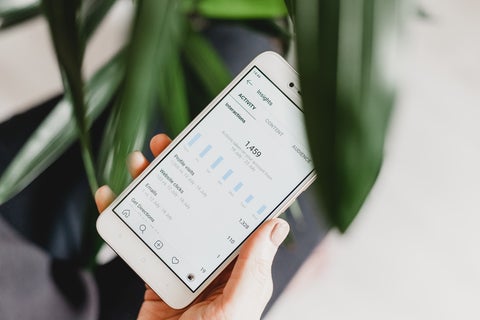Understanding CPG Social Media Analytics
The majority of CPG brands understand the importance of a social media presence. But understanding CPG social media analytics? That’s a whole other ball game.
Presented with a dashboard full of charts and stats, it can be hard to work out what it all means for your brand. Nevertheless, this invaluable info can tell you so much.
It can help you to craft a winning social media strategy, rather than just posting and hoping for the best. It can help you to make informed choices and get a great ROI on all of the time and effort you spend putting social posts together.

Let’s take a deeper look at CPG social media analytics: how to access your data, what all of those key metrics mean, and how you can use that info to maximize your brand’s social media marketing potential.
How to access your CPG social media analytics
Every time a user interacts with your social media page or your posts, those social media platforms gather data.
They present this data to you (for free) via a native analytics dashboard. Each social media platform has one— although in some cases, this dashboard is only available to business users.
In Facebook and Instagram, you’ll find analytics via the Insights tab. In YouTube, you navigate via YouTube Studio. For Twitter, simply head to Twitter Analytics.
Depending on which platforms you’re using, you’ll find different tools, metrics, and capabilities within the native analytics dashboard.
Some CPG brands choose to use a paid-for social media analytics tool instead. This umbrella platform pulls together data from all of your social media accounts, making it easier to see and act upon that info.
Whichever way you choose to access your CPG social media analytics, it’s super important that you understand what those metrics mean and what you can do with your data.
CPG social media analytics: a deep dive into the key metrics
As we mentioned earlier, each social media platform provides its own magic mix of metrics. But there are a few key stats you can expect to find whichever social network you’re using:
Impressions
This is the number of times a post appears in someone’s timeline. Social media algorithms have a part to play, but so too does the time of day you post and the engagement potential of the post itself.
Reach
Reach is the total number of unique users who see your post. This may exceed your number of social media followers when an account shares your content to their own follower base. Reach will also indicate whether a post has gone “viral”.
Likes, comments, and shares
These metrics indicate user engagement and can help you to work out what type of posts your social media users find interesting.
Post engagement rate
This is the number of engagements a post has, divided by impressions or reach. A high post engagement rate shows that a large proportion of people who saw the post chose to interact with it.
Account mentions
This is the number of times your brand has been mentioned or tagged across the social media platform. It’s a good indication of brand awareness.
Sentiment
Sentiment analysis tells you whether the online conversation around your brand is generally positive or negative. It helps you to understand how people are feeling about your brand.
Share of voice
Some social media analytics tools give you data on your share of voice. This tells you how much the internet is talking about your brand in comparison to your competitors.
CTR (click through rate)
If you include a link with your social media post, your CTR will tell you how often users actually click on that link, revealing how compelling your ‘call to actions’ are.
Follower growth
This stat tells you at what rate you’re gaining (or losing) followers. If your growth rate starts to stall, it’s time to examine your content and try to work out what is turning people off.
Response rate
Social media is a customer service tool. Your response rate shows how quickly you respond to customer messages and can give you some ideas for improving customer experience.
Audience demographics
Most social analytics dashboards will give you insight into audience demographics, including age, gender, and location. This can help you tailor posts to your audience and schedule content according to the right time zones.
A few things you can do with CPG social media analytics
Alone, these metrics don’t tell you an awful lot. But when you view them in conjunction with one another, you get to see a bigger picture.
Imagine, for instance, that a post got a huge number of likes but very few comments or shares. You might want to look at your captions and work harder to encourage that next level of user engagement.
Similarly, if a post is seen hundreds of times but your CTR is poor, then you’re probably posting at the right time of day — but your content and CTAs need a little work.
It’s also important to build up a social media picture over time, by regularly monitoring post and page performance. This will help you to:
Identify which social media platforms work best for your brand
Big legacy brands might be able to maintain a social media presence across all social media platforms. But smaller brands just don’t have the same bandwidth.
By viewing which social media platforms receive the greatest amount of traffic, you get to see where you’re getting the most bang for your buck.
This might lead you to ditch a platform entirely, or adopt an alternative approach to your content and posting schedule.

Compare different types of content
Which of your posts resonates most with your followers?
CPG social media analytics can tell you whether people prefer image- or video-based posts, whether they like your recipes or your how-tos, whether they tend to interact more in the afternoon or the evening.
By identifying your best-performing posts, you get to give your followers more of what they like to see and engage with.
Enhance your content strategy
When you understand what works, and what doesn’t, your social media posts get better and better.
With the help of analytics, you can craft a social content strategy that provides the best possible ROI — posting the most engaging content to the right audiences at the right time.
Work towards social media goals
Every CPG brand should have at least one defined social media goal.
You may want to improve the website traffic you get from social media or increase your conversions. You may want to build brand awareness or generate new leads.
By selecting the right metrics and setting a time frame, you can set about achieving that goal knowing you have a concrete way to measure your success.
This helps to give structure and strategy to your social media marketing.
Improve your overall brand health
By delving into the (slightly complicated) world of social media analytics you learn more about your audience, your competitors, and how your brand is perceived. This knowledge can then feed into other areas of your marketing and business strategy.
Social media analytics gives you a ton of really useful information. When you understand what all those stats are trying to tell you – and actually act upon the data — you can really maximize the potential of your CPG social media presence.
Want more CPG industry insight? Head over to the Buffalo Market blog for CPG tricks, tips, and the latest news.


